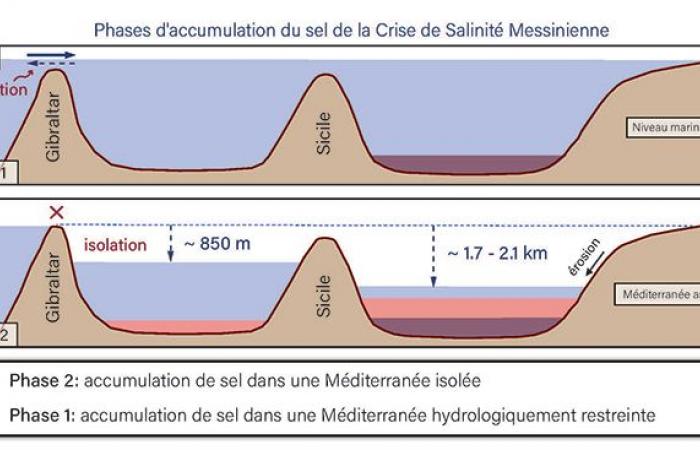A new study led by a CNRS researcher
highlighted the significant drop in the level of the Mediterranean Sea during the Messinian salinity crisis, a major geological event which transformed the Mediterranean into a gigantic saline basin between 5.97 and 5.33 million years ago
. How a million cubic kilometers of salt accumulated on the Mediterranean ocean floor in a short period of time remained unknown until now.
Using chlorine isotope analysis
contained in the salts extracted from the bottom of the Mediterranean, scientists have traced the two phases of this extreme drying. In a first phase, around 35,000 years ago, salts were deposited in the eastern part of the Mediterranean due to a partial restriction of its flow towards the Atlantic. During a second, shorter phase (less than 10,000 years), salts accumulated throughout the Mediterranean, causing a rapid drying of the sea, with a drop in water levels of 1. 7 to 2.1 kilometers in the eastern Mediterranean and about 850 meters in its western part. Thus, the Mediterranean basin has lost up to 70% of its water volume.
This spectacular drop in sea level would have had consequences on terrestrial fauna and the Mediterranean landscape. It would also have triggered volcanic eruptions in this region due to the lightening of the earth’s crust, and would have generated climatic effects on a global scale linked to the depression thus created.
These results, published in the journal Nature Communications on November 18, provide a better understanding of past extreme geological phenomena, the evolution of the Mediterranean region and its repercussions on a global scale.
This work benefited from the support of the European Union and the CNRS.
Morocco







